
Henderson: Chinese money growth slowing but still respectable
Chinese nominal and real economic growth may be starting to moderate, consistent with a slowdown in monetary expansion since the second half of 2016. Money trends, however, remain respectable by historical standards, suggesting that economic weakness will be contained.
16.05.2017 | 13:20 Uhr
Annual industrial output growth fell back from 7.6% in March to 6.5% in April, while producer price inflation moderated from 7.6% to 6.4%. The product of industrial output and producer prices is a rough guide to nominal GDP, annual growth of which is likely to have peaked in the first quarter of 2017 – see first chart.
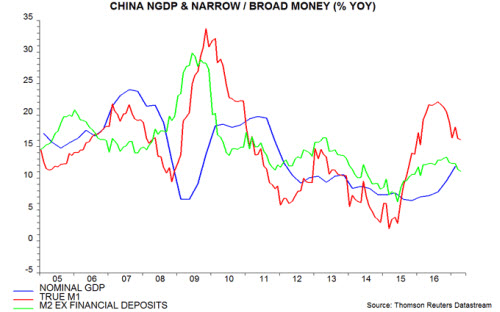
A topping out of nominal GDP growth in the first half of 2017 had been suggested by slower monetary expansion in late 2016. Annual growth of the preferred narrow and broad money measures here peaked in August and November 2016 respectively – second chart*.
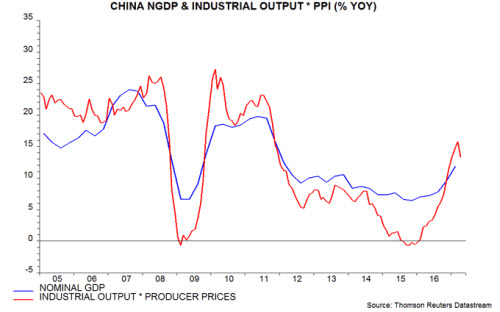
The money growth measures eased further in April but have retraced less than one-third of their rise over 2015-16. The monetary backdrop, therefore, remains considerably more expansionary than in late 2014 / early 2015.
The third chart shows six-month growth rates of industrial output, real narrow money and real total social financing (real = deflated by consumer prices). Real narrow money growth has fallen significantly since August 2016 but remains above its average since 2010. Real financing growth, meanwhile, has only recently edged lower.
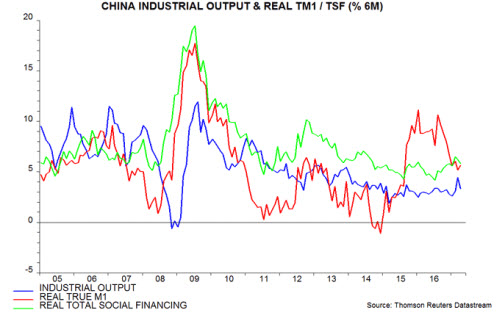
Investors are concerned that a recent policy-driven tightening of money market conditions, reflected in significantly higher interest rates, will cause the economy to slow sharply over the summer. This change, however, will take several months to feed through to money growth, which typically leads activity by six to 12 months, suggesting that the negative impact will be delayed until late 2017. The PBoC, moreover, may act to temper the recent squeeze.
Interest rates on bank lending edged up in the first quarter but remained well down from 2014-15, according to just-released PBoC data – fourth chart.
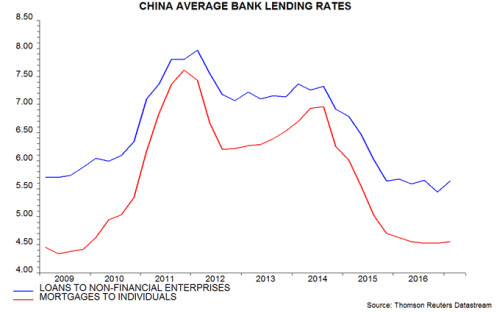
Annual growth of private fixed asset investment in value terms fell to a four-month low in April but weakness is likely to prove temporary, with strong growth of profits and enterprise bank deposits continuing to give a positive signal – fifth chart.
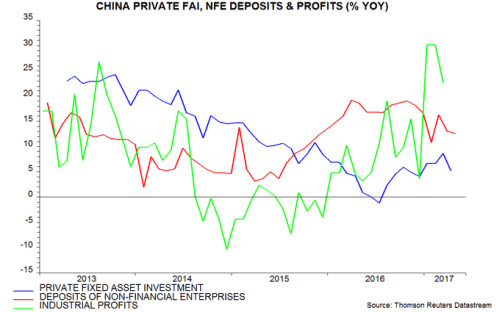
*Narrow money = “true” M1 = official M1 plus household demand / temporary deposits (relevant for assessing consumer spending prospects). Broad money = M2 minus financial sector deposits (volatile and unrelated to economic prospects).



Diesen Beitrag teilen: